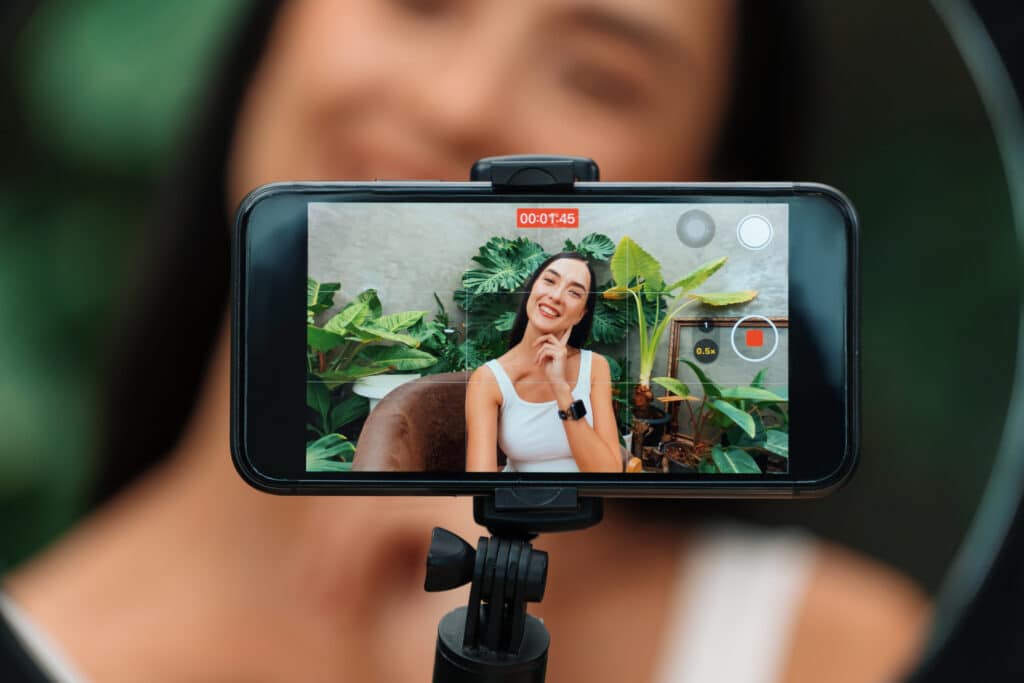In the dynamic arena of digital marketing, where every scroll is a decision and every tap a vote, brands are constantly vying for attention. Yet, many still operate under a content paradigm that, while successful in traditional media, falls flat in the vibrant, unscripted chaos of social platforms. We’re talking about the fundamental shift to social-first content. This isn’t just about repurposing your latest blog post or adapting a TV commercial for a vertical video format. No, social-first content is conceived, planned, and executed specifically for social media and the unique behaviors of its users. It’s about understanding the nuances of each platform – from the fleeting nature of a Story to the endless scroll of a feed – and tailoring your messages to resonate within that native environment. It aims to capture attention and elicit a desired response, with an accompanying action.
This approach stands in stark contrast to what we might call editorial content. Think of editorial content as the “overly edited” or “perfect” piece. It’s polished, meticulously controlled, and often designed for a more formal publication or website before being adapted for social sharing. While there’s a time and place for such pristine content, in today’s social ecosystem, this level of perceived perfection can often come across as inauthentic or even sterile. People, quite simply, can see through it. They’re not looking for a curated facade; they’re looking for reality.
This brings us to the authenticity imperative—the very heartbeat of social-first success. Social media users aren’t just passive consumers; they’re actively seeking connection and trust. They want to know what your hotel really looks like from a guest’s perspective, how your restaurant’s food actually appears when it hits the table, or what your product truly does in the hands of an everyday user. If they don’t find that raw, unvarnished reality on your official feed, they will, inevitably, go searching for it elsewhere—checking tagged photos, looking up reviews, or seeking out peer discussions. That desire for unscripted truth allows audiences to believe in and depend on the information shared.
This inherent need for authenticity immediately funnels into the trust factor. When your content feels real, relatable, and transparent, it swiftly builds credibility. This trust isn’t just a warm fuzzy feeling; it’s the currency of conversion. Users are more likely to engage with, remember, and ultimately convert from brands they trust. That’s the power of social-first: it’s not just about getting eyeballs, but about forging genuine connections that lead to loyalty and, of course, revenue.

The Art of Acquisition – Sourcing Authentic Social-First Content
Now that you’re well-versed in the what and the why of social-first content, the burning question remains: how do you actually get it? This is where many brands hit a wall, mistakenly believing that every piece of content must originate from their internal marketing team. The truth is, the most impactful social-first content often comes from outside your immediate control, born from authentic experiences shared by your biggest fans and trusted partners.
One of the most potent wells of social-first content is User-Generated Content (UGC). This is exactly what it sounds like: any form of content—be it images, videos, reviews, or testimonials—created by people, not by brands. Think of a customer sharing a stunning photo of their meal at your restaurant, a traveler posting a reel of their breathtaking hotel room view, or someone unboxing your product with genuine excitement. UGC is inherently authentic because it’s unsolicited and unvarnished. It provides undeniable, real-world proof of your product or service in action, shared directly from a peer’s perspective. It capitalizes on the fact that social media users seek connection and trust, often relying on the experiences of others more than direct brand messaging. Actively encouraging and curating UGC, perhaps through branded hashtags or contests, can fill your feed with a constant stream of relatable, trustworthy material.
Beyond the organic brilliance of UGC, your affiliate network becomes an indispensable source of social-first content. As we’ve championed before, when you treat your affiliates as true partners and equip them with the insights and collateral they need, they become powerful advocates. They’re not just distributing your links; they’re creating authentic experiences with your brand. An affiliate showcasing how they genuinely use your product in their daily life, sharing their honest review, or participating in your sales events with real enthusiasm generates content that feels natural and trustworthy. This kind of content maximises reach by creating content that elicits the desired response and drives engagement.
And don’t stop there. Other powerful avenues for acquiring authentic content include:
- Micro-Influencer Partnerships: Collaborating with smaller-scale influencers who have highly engaged, niche audiences can yield incredibly authentic content. Their followers often feel a personal connection, making their recommendations carry significant weight.
- Brand Ambassadors: Cultivate relationships with loyal customers or community members who genuinely embody your brand values. These individuals can consistently produce high-quality, authentic content that resonates deeply with your target audience.
Why do these methods matter so immensely? Because they address the core desires of today’s social media user: for realness, for connection, and for trust. This content is inherently platform-specific, aligning with how users naturally interact and seek information. It maximizes your reach by crafting content that resonates deeply, fostering deeper connections with audiences, and ultimately enhancing content visibility. By leaning into UGC and affiliate-generated content, you’re not just filling your feed; you’re building a vibrant, trustworthy brand narrative, one authentic post at a time. It’s about letting your community tell your story, which, as we know, is far more compelling than any story you could tell yourself.

The Undeniable Impact – Why Authenticity and Engagement Drive Trust and ROI
We’ve established that social-first content is distinct, dynamic, and essential for capturing modern audiences. We’ve also explored how to acquire this gold standard of content through the power of user-generated content and engaged affiliate networks. But why does this seemingly less polished, more “real” approach ultimately outperform traditional methods? The answer lies in its profound impact on two invaluable assets: trust and engagement, which, when maximized, invariably lead to exceptional ROI.
In today’s hyper-connected yet often skeptical digital landscape, authenticity isn’t just a buzzword; it’s the new currency. Social media users actively seek connection and trust, and authenticity is the bedrock upon which these are built. They are tired of the glossy, the curated, the “overly edited” perfection that often defines traditional editorial content. They crave genuine experiences and unvarnished truths. When your brand consistently delivers content that feels real, whether it’s a customer unboxing your product, an affiliate sharing their honest daily use, or a raw, behind-the-scenes glimpse, it cultivates an immediate sense of credibility. This authentic connection allows your audience to believe in and depend on the information shared, fostering a level of trust that traditional advertising simply cannot buy.
This inherent authenticity also acts as a powerful catalyst for engagement. Unlike static, polished ads that users often scroll past, social-first content is designed to elicit a response and spark conversation. It’s iterative, encourages interaction, and can be easily shared across platforms. When a hotel shares a genuine guest video, or a restaurant posts a spontaneous clip from its kitchen, it invites comments, shares, and direct messages. This isn’t just vanity metrics; active engagement signals to social algorithms that your content is valuable, increasing its visibility and reach organically. More importantly, it transforms passive viewers into active participants, deepening their relationship with your brand. They’re not just watching; they’re participating in your brand’s story.
Ultimately, this increased trust and profound engagement translate directly into tangible business results. When consumers trust a brand, and feel engaged with its content, they are far more likely to convert into loyal customers. This means higher conversion rates, increased customer lifetime value, and a more robust pipeline for lead generation. Furthermore, the efficiency of acquiring content through UGC and affiliates can significantly lower your content creation costs while simultaneously amplifying your reach. This isn’t just about quick sales; it’s about building a stronger brand and reputation that endures.
At Phrasing, we fundamentally believe that the future of digital marketing isn’t about chasing fleeting trends, but about embracing core principles that resonate with human nature. A social-first content strategy, driven by an unwavering commitment to authenticity and designed to foster genuine engagement, isn’t just a strategic recommendation. It’s the essential blueprint for brands and marketers who are serious about achieving measurable growth and building lasting connections in a world hungry for the real deal.
Key Takeaways from This Article:
- Social-first content is created for social platforms and user behavior, fundamentally differing from traditional, “overly edited” editorial content.
- Authenticity is paramount on social media; users crave real, unvarnished content and will seek it out if your brand doesn’t provide it.
- Brands can effectively acquire social-first content through User-Generated Content (UGC), engaged affiliate networks, and strategic partnerships with micro-influencers or brand ambassadors.
- These authentic content sources foster deeper trust and higher engagement, as users are more likely to believe and interact with content from perceived real experiences.
- Ultimately, increased trust and engagement lead to significant ROI, driving higher conversion rates, stronger brand loyalty, and more effective customer acquisition.

